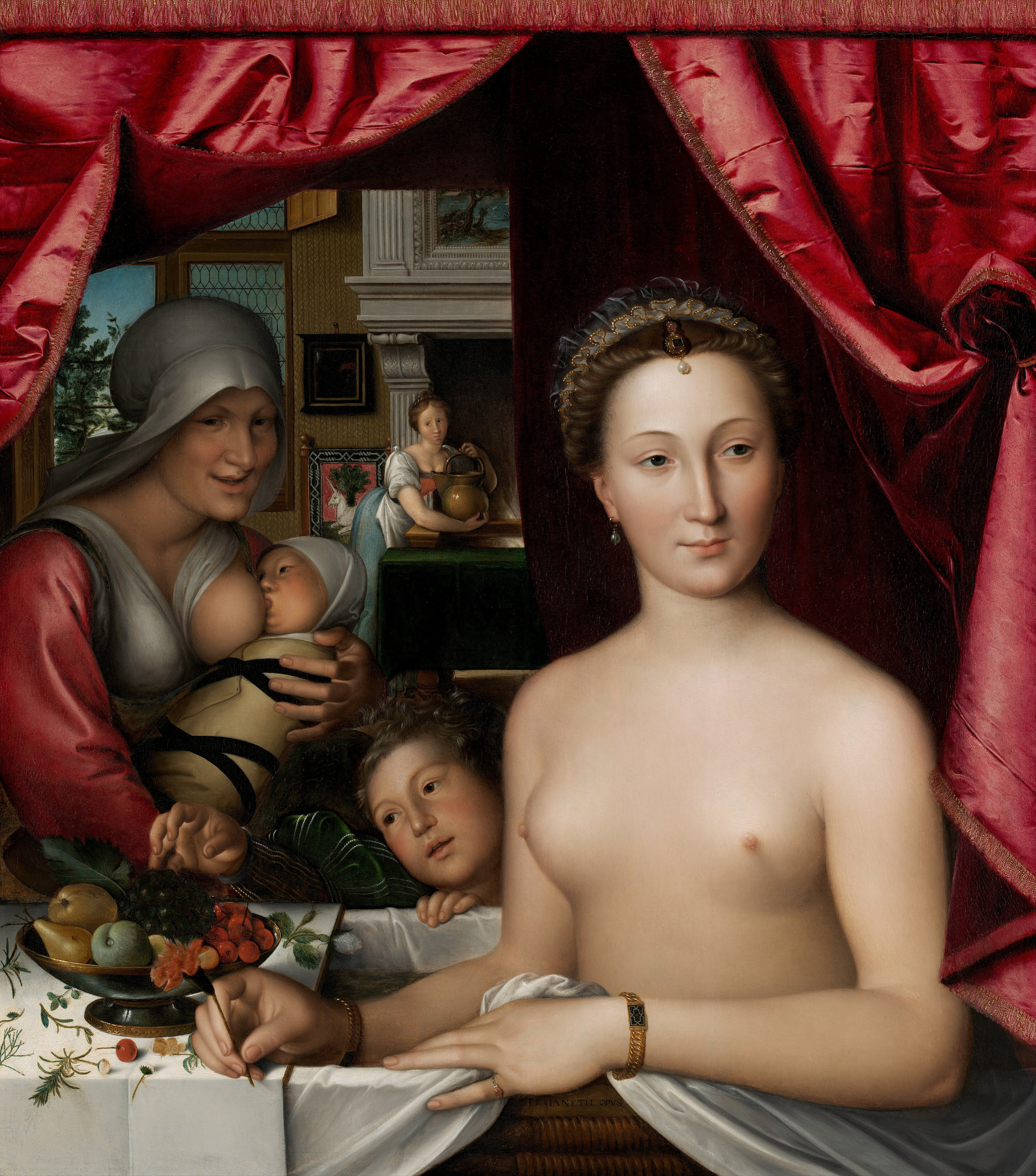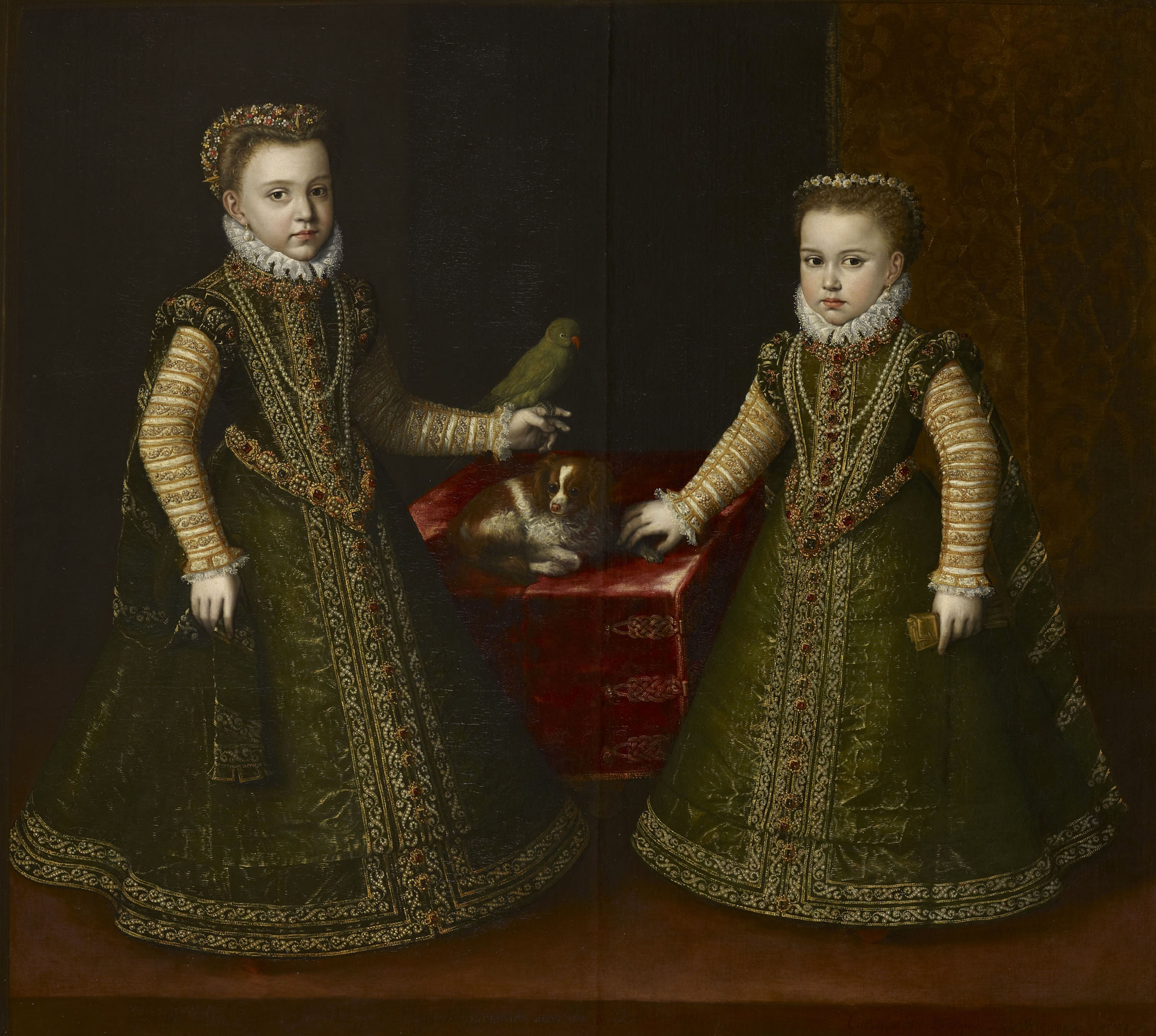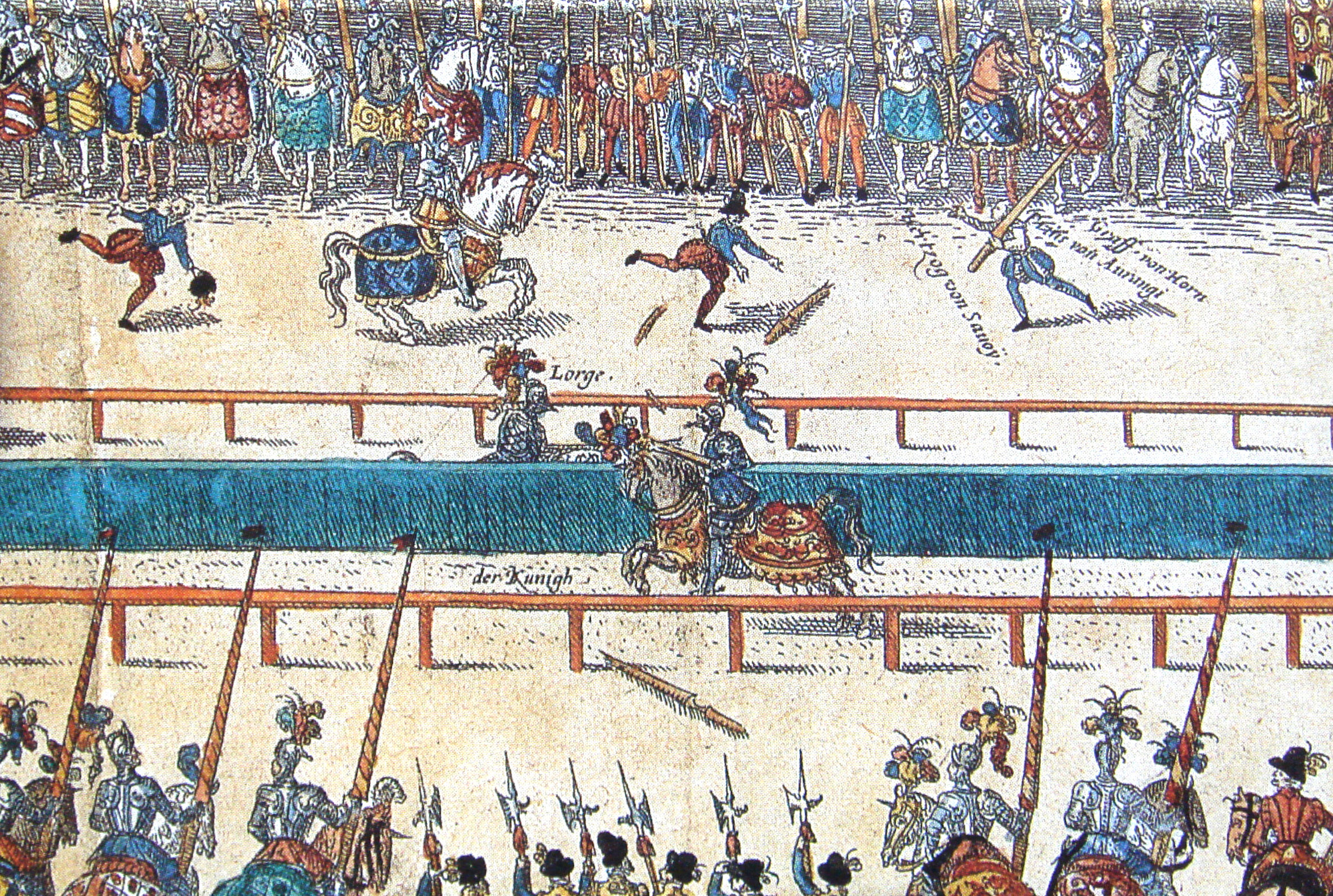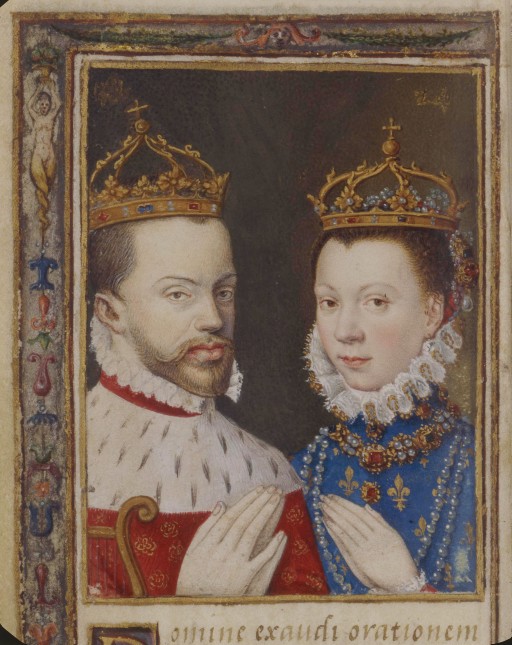|
Margaret Of France, Duchess Of Berry
Margaret of Valois, Duchess of Berry (French: ''Marguerite de Valois'') (5 June 1523 – 15 September 1574) was Duchess of Savoy by marriage to Duke Emmanuel Philibert of Savoy. She was the daughter of King Francis I of France and Claude, Duchess of Brittany. Biography Early life Margaret was born at the Château de Saint-Germain-en-Laye on 5 June 1523 the youngest daughter and child of King Francis I of France and Claude, Duchess of Brittany. Margaret was very close to her paternal aunt, Marguerite of Angoulême, who took care of her and her sister Madeleine during her childhood, and her sister-in-law Catherine de' Medici. Near the end of 1538, her father and Charles V, Holy Roman Emperor, agreed that Margaret should marry Charles' son, the future Philip II of Spain. However, the agreement between Francis and Charles was short-lived and the marriage never took place. In 1557 she appointed as lady in waiting Jacqueline d'Entremont, to whom she would remain close with la ... [...More Info...] [...Related Items...] OR: [Wikipedia] [Google] [Baidu] |
François Clouet
François Clouet (c. 1510 – 22 December 1572), son of Jean Clouet, was a French Renaissance miniaturist and painter, particularly known for his detailed portraits of the French ruling family. Historical references François Clouet was born in Tours, as the son of the court painter Jean Clouet. Jean Clouet was a native of the Southern Netherlands and probably from the Brussels area. François Clouet studied under his father. He inherited his father's nickname 'Janet' and is referred to as such in some early sources and the older literature. The earliest reference to François Clouet is a document dated December 1541 in which the king renounces for the benefit of François his father's estate, which had escheated to the crown as the estate of a foreigner. In this document, the younger Clouet is said to have followed his father very closely in his art. Like his father, he held the office of groom of the chamber and painter in ordinary to the king, and so far as salary is con ... [...More Info...] [...Related Items...] OR: [Wikipedia] [Google] [Baidu] |
Catherine De' Medici
Catherine de' Medici ( it, Caterina de' Medici, ; french: Catherine de Médicis, ; 13 April 1519 – 5 January 1589) was an Florentine noblewoman born into the Medici family. She was Queen of France from 1547 to 1559 by marriage to King Henry II and the mother of French Kings Francis II, Charles IX, and Henry III. The years during which her sons reigned have been called "the age of Catherine de' Medici" since she had extensive, if at times varying, influence in the political life of France. Catherine was born in Florence to Lorenzo de' Medici, Duke of Urbino, and Madeleine de La Tour d'Auvergne. In 1533, at the age of 14, Catherine married Henry, the second son of King Francis I and Queen Claude of France. Catherine's marriage was arranged by her uncle Pope Clement VII. Henry excluded Catherine from participating in state affairs and instead showered favours on his chief mistress, Diane de Poitiers, who wielded much influence over him. Henry's death in 1559 thrust Cath ... [...More Info...] [...Related Items...] OR: [Wikipedia] [Google] [Baidu] |
Turin Cathedral
la, Ecclesia Sancti Johannis Baptista , native_name = Duomo di Torino , native_name_lang = Italian , image = DuomoTorino.jpg , caption = The Cathedral in 2019 , imagelink = , pushpin map = Italy Turin , pushpin mapsize = , map caption = Map of Turin , coordinates = , osgridref = , location = Turin , country = Italy , denomination = Roman Catholic Church , previous denomination = , churchmanship = , membership = , attendance = , website = , former name = , bull date = , founded date = , founder = , dedication = , dedicated date = , consecrated date = 1505 , cult = , relics = Shroud of Turin , events = , past bishop = , people = , status = Cathedral , functional status = Active , heritage designation = , designated date = , architect = Amedeo di Francesco da Settignano ( it) , architectural type = , style = Renaissance and Baroque , years built = 1468-1470 (bell tower)1491-1498 , groundbreaking = , completed date = , con ... [...More Info...] [...Related Items...] OR: [Wikipedia] [Google] [Baidu] |
Infanta Catherine Michelle Of Spain
Catherine Michaela of Spain (; 10 October 1567 – 6 November 1597) was Duchess of Savoy by marriage to Duke Charles Emmanuel I. She ruled the Duchy several times as regent in Charles Emmanuel's absence, notably during his campaign in 1594.Dizionario Biografico degli Italiani – Volume 22 (1979) She was the younger surviving daughter of Philip II of Spain and Elisabeth of Valois. Early life Catherine Michaela was the daughter of Philip II, ruler of the vast Spanish Empire, and his third wife, the French princess Elisabeth of Valois. She was described as beautiful, intelligent, arrogant and well aware of her high social status. Though her father did not attend her christening and was not as rejoiced at the birth of a daughter as he had been with her elder sister, Isabella Clara Eugenia, she had a good relationship with him. Philip and Catherine Michaela exchanged letters throughout her life. She had a close relationship with her sister. They were raised together under the care ... [...More Info...] [...Related Items...] OR: [Wikipedia] [Google] [Baidu] |
Notre Dame Cathedral
Notre-Dame de Paris (; meaning "Our Lady of Paris"), referred to simply as Notre-Dame, is a medieval Catholic cathedral on the Île de la Cité (an island in the Seine River), in the 4th arrondissement of Paris. The cathedral, dedicated to the Virgin Mary, is considered one of the finest examples of French Gothic architecture. Several of its attributes set it apart from the earlier Romanesque style, particularly its pioneering use of the rib vault and flying buttress, its enormous and colourful rose windows, and the naturalism and abundance of its sculptural decoration. Notre Dame also stands out for its musical components, notably its three pipe organs (one of which is historic) and its immense church bells. Construction of the cathedral began in 1163 under Bishop Maurice de Sully and was largely completed by 1260, though it was modified frequently in the centuries that followed. In the 1790s, during the French Revolution, Notre-Dame suffered extensive desecration; much of its ... [...More Info...] [...Related Items...] OR: [Wikipedia] [Google] [Baidu] |
Duke Of Savoy
The titles of count, then of duke of Savoy are titles of nobility attached to the historical territory of Savoy. Since its creation, in the 11th century, the county was held by the House of Savoy. The County of Savoy was elevated to a Duchy of Savoy, duchy at the beginning of the 15th century, bringing together all the territories of the Savoyard state and having Amadeus VIII, Duke of Savoy, Amadeus VIII as its first duke. In the 18th century, the duke Victor Amadeus II of Sardinia, Victor Amadeus II annexed the Kingdom of Sardinia to the historical possessions of the Duchy, and from then on, the Savoyard dukes also held the title of Kings of Sardinia. Counts of Savoy Dukes of Savoy Kings of Sardinia , Victor Amadeus II of Sardinia, Victor Amadeus II of Savoy17 February 1720 – 3 September 1730, , , , 14 May 1666Turinson of Charles Emmanuel II, Duke of Savoy and Marie Jeanne of Savoy, , Anne Marie d'Orléans, Anne Marie d'Orléans, Princess of France10 April 16846 chi ... [...More Info...] [...Related Items...] OR: [Wikipedia] [Google] [Baidu] |
Gabriel, Comte De Montgomery
Gabriel de Lorges, Count of Montgomery, Lord of Lorges and Ducey (5 May 153026 June 1574), was a French nobleman of Scottish extraction and captain of the Garde Écossaise, Scots Guard of King Henry II of France. He is remembered for mortally injuring Henry II in a jousting accident and subsequently converting to Protestantism, the faith that the Scots Guard sought to suppress. He became a leader of the Huguenots. In French-language contexts, his name is spelled Montgommery. Career On 30 June 1559, during a jousting match to celebrate the Peace of Cateau Cambrésis between Henry II and his longtime Habsburg enemies, and two major marriages, namely that of Marguerite, the king's sister, with the Emmanuel Philibert, Duke of Savoy, Duke of Savoy Emmanuel-Philibert, and that of Elisabeth, the king's eldest daughter, with Philip II of Spain, Philip II, king of Spain, a splinter of wood from Montgomery's shattered lance pierced Henry's eye and entered his brain, fatally injuring him. F ... [...More Info...] [...Related Items...] OR: [Wikipedia] [Google] [Baidu] |
Elisabeth Of Valois
Elisabeth of France or Elisabeth of Valois ( es, Isabel de Valois; french: Élisabeth de France) (2 April 1545 – 3 October 1568) was Queen of Spain as the third spouse of Philip II of Spain. She was the eldest daughter of Henry II of France and Catherine de' Medici. Early life Elisabeth was born in the Château de Fontainebleau. She was raised under the supervision of the governor and governess of the royal children, Jean d'Humières and Françoise d'Humières. Elisabeth's childhood was spent in the French royal nursery, where her father insisted she share her bedroom with her future sister-in-law, Mary, Queen of Scots, who was about three years older. Although Elisabeth had to give precedence to Mary (since Mary was already a crowned queen), the two would remain close friends for the rest of their lives. Her lady-in-waiting, Claude de Vineulx, accompanied her to Spain and often wrote reports of Elisabeth's health to Catherine. She was described as being shy, timid and ... [...More Info...] [...Related Items...] OR: [Wikipedia] [Google] [Baidu] |
Treaty Of Cateau-Cambrésis
A treaty is a formal, legally binding written agreement between actors in international law. It is usually made by and between sovereign states, but can include international organizations, individuals, business entities, and other legal persons. A treaty may also be known as an international agreement, protocol, covenant, convention, pact, or exchange of letters, among other terms. However, only documents that are legally binding on the parties are considered treaties under international law. Treaties vary on the basis of obligations (the extent to which states are bound to the rules), precision (the extent to which the rules are unambiguous), and delegation (the extent to which third parties have authority to interpret, apply and make rules). Treaties are among the earliest manifestations of international relations, with the first known example being a border agreement between the Sumerian city-states of Lagash and Umma around 3100 BC. International agreements were used in so ... [...More Info...] [...Related Items...] OR: [Wikipedia] [Google] [Baidu] |
Henry II Of France
Henry II (french: Henri II; 31 March 1519 – 10 July 1559) was King of France from 31 March 1547 until his death in 1559. The second son of Francis I and Duchess Claude of Brittany, he became Dauphin of France upon the death of his elder brother Francis in 1536. As a child, Henry and his elder brother spent over four years in captivity in Spain as hostages in exchange for their father. Henry pursued his father's policies in matters of art, war, and religion. He persevered in the Italian Wars against the Habsburgs and tried to suppress the Reformation, even as the Huguenot numbers were increasing drastically in France during his reign. Under the April 1559 Peace of Cateau-Cambrésis which ended the Italian Wars, France renounced its claims in Italy, but gained certain other territories, including the Pale of Calais and the Three Bishoprics. These acquisitions strengthened French borders while the abdication of Charles V, Holy Roman Emperor in January 1556 and division of h ... [...More Info...] [...Related Items...] OR: [Wikipedia] [Google] [Baidu] |
Duchess Of Berry
Duke of Berry (french: Duc de Berry) or Duchess of Berry (french: Duchesse de Berry) was a title in the Peerage of France. The Duchy of Berry, centred on Bourges, was originally created as an appanage for junior members of the French royal family and was frequently granted to female royals. The style Duke of Berry was later granted by several Bourbon monarchs to their grandsons. The last official Duke of Berry was Charles Ferdinand of Artois, son of Charles X. The title Duke of Berry is currently used as a courtesy title by Prince Alphonse de Bourbon, son of the Legitimist Pretender to the French Throne Louis Alphonse de Bourbon. House of Valois (1360-1505) On October 1360, King John II created the peerage-duchy of Berry as an appanage for his third-born son, John of Poitiers, perhaps on the occasion of his marriage with Joan of Armagnac. Upon his death in 1416, John of Poitiers was succeeded as Duke of Berry by his grandnephew John, Dauphin of France (having been predeceased i ... [...More Info...] [...Related Items...] OR: [Wikipedia] [Google] [Baidu] |
Suo Jure
''Suo jure'' is a Latin phrase, used in English to mean 'in his own right' or 'in her own right'. In most nobility-related contexts, it means 'in her own right', since in those situations the phrase is normally used of women; in practice, especially in England, a man rarely derives any style or title from his wife (an example is Richard Neville, earl of Warwick from his wife's heritage) although this is seen in other countries when a woman is the last heir of her line. It can be used for a male when such male was initially a 'co-lord' with his father or other family member and upon the death of such family member became the sole ruler or holder of the title "in his own right" (Alone). It is commonly encountered in the context of titles of nobility or honorary titles, e.g. Lady Mayoress, and especially in cases where a woman holds a title through her own bloodline or accomplishments rather than through her marriage. An empress or queen who reigns ''suo jure'' is referred to as ... [...More Info...] [...Related Items...] OR: [Wikipedia] [Google] [Baidu] |







